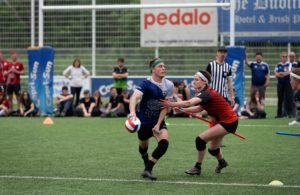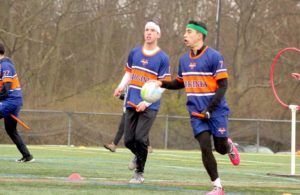- Rule, Britannia, no more?
- Unpopular Opinions: US Quadball Cup 2023
- Proven Contenders: University of Virginia
- Proven Contenders: Rutgers University
- Proven Contenders: University of Michigan
- Proven Contenders: Creighton University
- Different Perspectives: A Look Inside USA Ultimate
- Antwerp QC, Much of Belgian Core, Leaves Competitive Quidditch
A Look at the Top: the Southwest
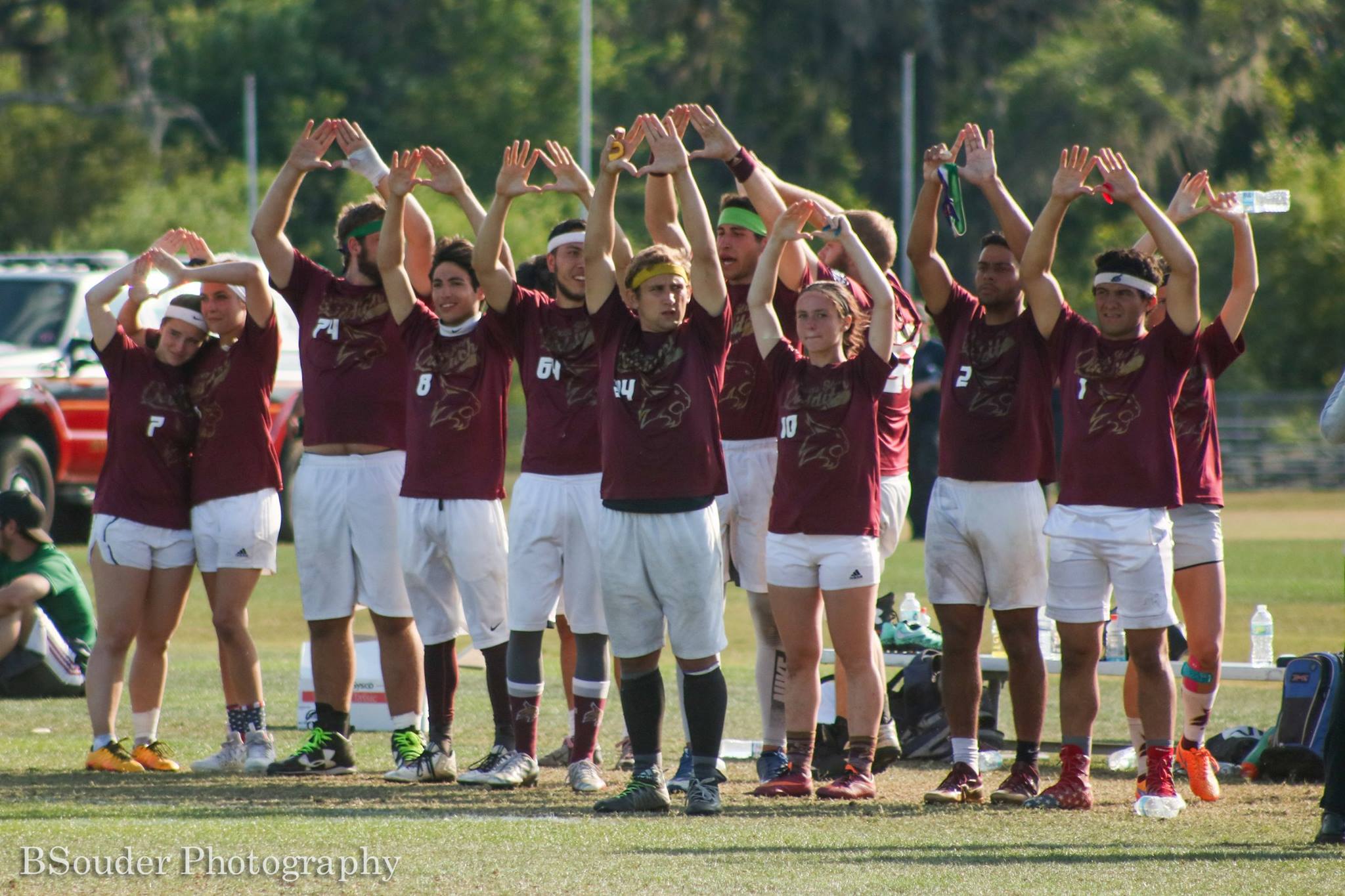
Credit: BSouder Photography
Guest writer Cole Travis takes an early look at the assumed top three college teams in the Southwest for the 2017-18 season.
Texas State University
US Quidditch Cup finalists Texas State University face the unenviable task of replacing four first-team All-Southwest players: keepers Robby Sluss and Craig Garrison, chaser Christian Rodriguez and beater Jackson Johnson.
Garrison and Sluss played the majority of minutes at keeper for the Bobcats last season. Without a player on the roster with Garrison’s experience or Sluss’s combination of size and speed, the Bobcats face the prospect of some early season growing pains.
However, Texas State remains well-stocked at chaser. While they lack Rodriguez’s explosiveness, first- and second-team All-Southwest chasers Stephan Freeman-Vigil and Terencio Martinez provide stout defense and intelligent offensive play. They will likely be asked to carry much of the offensive load while the Bobcats search for reliable production at keeper.
Fortunately for the Bobcats’s quaffle carriers, Texas State returns all of its female chasers. Second-team All-Southwest players Jenna Bollweg and Hannah Shaw took their sure-handed, goal-scoring habits to MLQ, playing for League City and Austin respectively.If the Bobcats expect to have similar offensive success as last season, Bollweg and Shaw need to keep opposing defenses honest with their positioning and punish teams that neglect them.
Johnson built a national title contender on the back of chaotic, relentless beating, and that style looks likely to continue even after his graduation. Texas State retains first-team and second-team All-Southwest beaters Bailee Fields and Ryan Nawrocki as well as Kris De La Fuente and Jessica Markel. Additionally, the Bobcats gained John Molina, formerly of Texas Cavalry, giving them five beaters who played for the MLQ Champion Austin Outlaws.
Possessing the deepest and most experienced beater corps in the region, the Bobcats should rack up early season wins while other teams teach new players the nuanced position; however come April, their ability to develop reliable quaffle players could be the difference between the elusive gold medal or another silver.
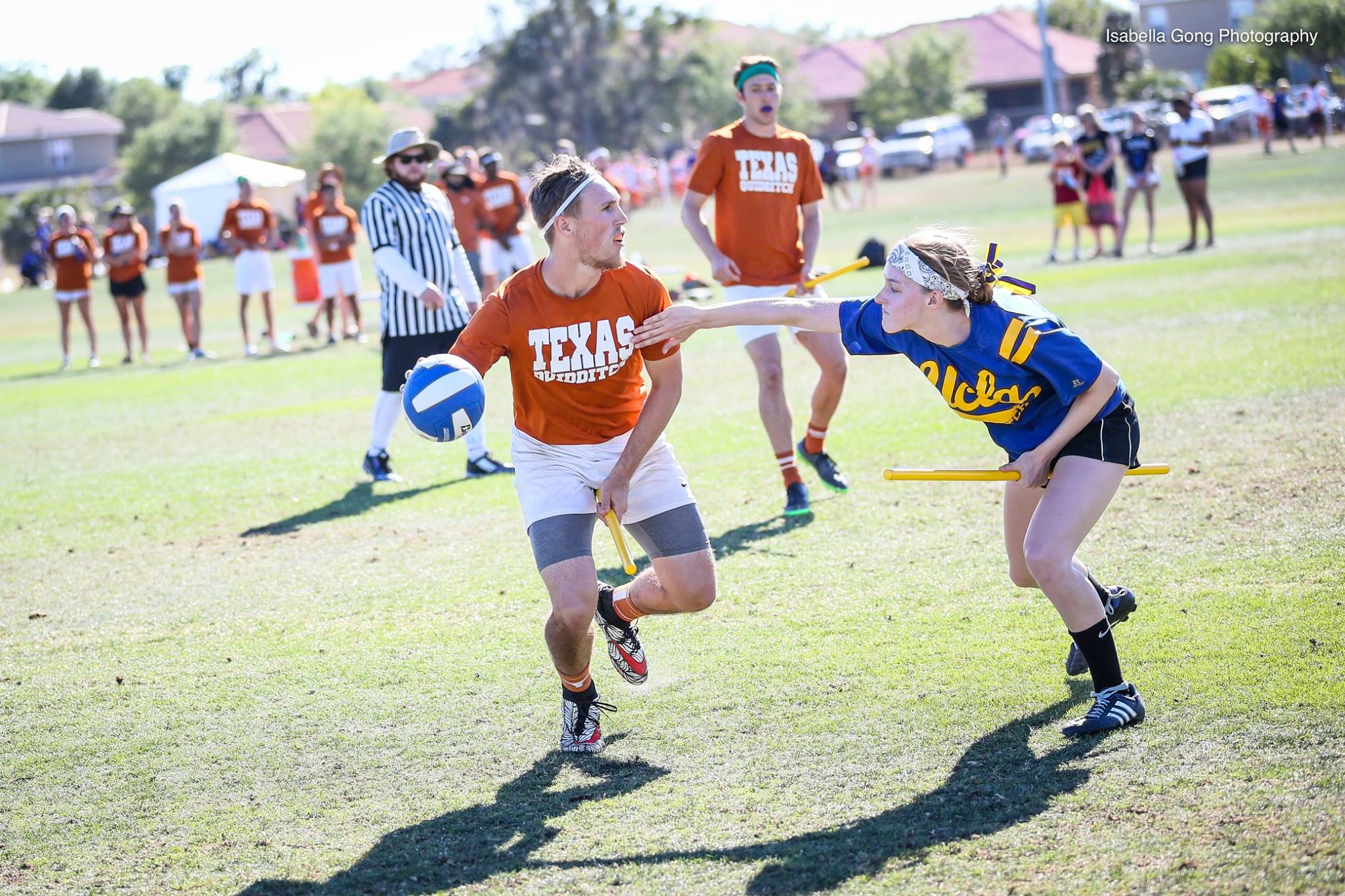
Credit: Isabella Gong
University of Texas
Recently crowned the greatest college program in USQ, the University of Texas Longhorns enter the 2017-18 season looking to reassert themselves as national title contenders.
Only a few members of the dynasty era of Texa remain. Among them is first-team All-Southwest chaser Nick Marino. Entering his fourth season with the Longhorns, Marino has built a reputation as an exceptional defender both in USQ and MLQ as a two-time member of the Austin Outlaws.
For all his great qualities, Texas needed Marino to carry a heavy load last season, at times playing point on defense and operating as a primary ball carrier on offense. Expect Marino to shine even brighter this season, especially if Texas develops more talent in either of these roles.
Texas spent last season molding another group of quaffle players and now it’s time to see what kind of players they become. If the Longhorns are known for anything, it’s chaser defense. Along with Marino, there are several potential formidable defenders. Dylan Bottoms has recovered from a knee injury and looks ready to deal out some hits, while Alec McCracken provides high-energy play reminiscent of former Longhorns Ryan Davis and Paden Pace.
Keepers Luke Meissner and Michael Johnson are poised for breakout seasons. Johnson spent the summer playing for the Boston Night Riders and learning from their skilled quaffle players. Meissner’s speed and decision making stood out over the course of last season. With another year of coaching from Simon Arends, both could become household names this season.
Another member of Texas’s last national championship team, first-team All-Southwest beater Hallie Pace presents a difficult match up for any opponent. Rarely ever out of position, Pace controls the middle of the defense as well as any beater. Along with Pace, junior beater Eddie Molina will likely play long shifts early in the season as the Longhorns attempt to solidify their depth at the male beater position, following the graduation of Zach Pickett.
If Texas’s young talent blossoms and meshes with the key veteran pieces, the Longhorns could compete for a regional and national title. If not, we will find out how far the stars can carry the team.
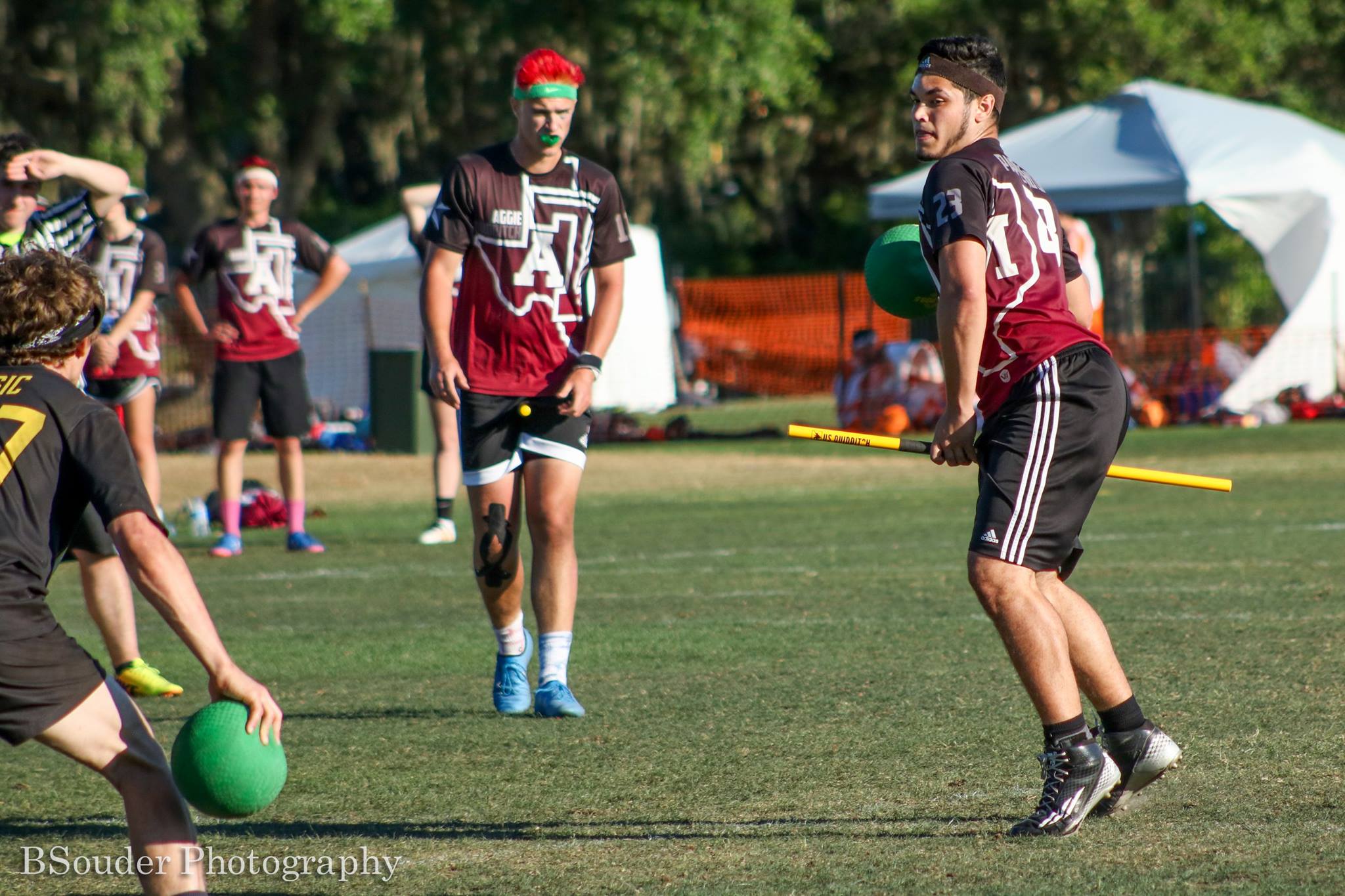
Credit: BSouder Photography
Texas A&M University
Texas A&M University spent much of last season struggling to reach its potential. Injuries to key quaffle players meant the offense rested on the shoulders of inexperienced players. While the growing pains of last season frustrated the Aggies, it provided the experience the young players needed to contribute to a national title run this year.
The engine driving this A&M team is a veteran beater corps. The Aggies return several contributors, including first-team All-Southwest utility player Daniel Sobarzo as well as Alexis Wien and Alex Stewart. However, it appears that senior, second-team All-Southwest beater Harris Coleman plans to take time away from the sport. Coleman is an electric player and his absence means some young beaters will have to step up to provide quality depth behind Sobarzo.
Despite two of their primary ball carriers–keepers McKenzie Connell and Austin Erickson–recovering from knee surgeries, the Aggies boast an enviable collection of quaffle players. Keepers Sean Church and Sammy Garza bring a thunder-and-lightning combination to the field. They’ll look for chasers Alex Mireles, Logan Zahn and Shawn Erwin to exploit mismatches using creativity and athleticism around the hoops.
This A&M team excels when its beaters force fast-break situations, thanks to the overall athleticism of its quaffle players. Mireles and Garza present particularly tough match-ups on the break with their combination of straight-line speed and lateral agility.
Defensively last season, the Aggies’ strong beater corps was a two-edged sword. While they often created turnovers, they seemingly just as often put chasers in difficult no-bludger situations. In order to contend this year, the Aggies will have to develop a more tenacious chaser defense, especially following the graduation of their best defender, Sam Haimowitz.
Following the 2013-14 World Cup VII season, Texas A&M faced an exodus of talent few teams recover from. A generation of players later, the Aggies rebuilt and stand prepared to contend for a national title once again.

